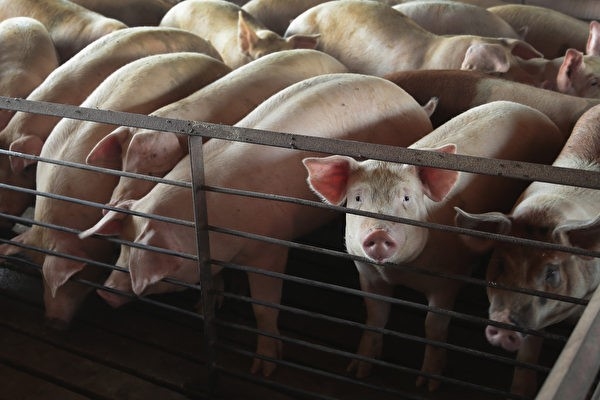Fujian Aonong Biological Technology Group Co., Ltd. (Aonong Biological, ST Aonong) announced on May 18th that the company’s current debt ratio has exceeded 100%, plunging into a situation of insolvency.
In the announcement titled “ST Aonong: Announcement of Fujian Aonong Biological Technology Group Co., Ltd. on receipt of Information Disclosure Inquiry Letter of the Company’s 2023 Annual Report from Shanghai Stock Exchange” released on May 18th, Aonong Biological answered six questions from the “Information Disclosure Inquiry Letter on the 2023 Annual Report” issued by the Shanghai Stock Exchange on May 17th.
According to the announcement, as of the end of last year, Aonong Biological had a currency balance of 208 million yuan, a year-on-year decrease of 71.12%; short-term borrowings amounted to 3.835 billion yuan, accounts payable and notes payable were at 3.557 billion yuan, other payables stood at 1.473 billion yuan, and non-current liabilities due within one year reached 1.872 billion yuan. The current ratio at the end of the period was 0.25, with an asset-liability ratio exceeding 100%, indicating insolvency.
Additionally, in 2023, Aonong Biological’s revenue from pig farming business reached 5.318 billion yuan, accounting for nearly one-third of the total revenue, with a gross profit margin of -27.17%, a decrease of 32.4 percentage points compared to the previous year.
The significant decline in gross profit margin was attributed to lower pig weights in the latter half of 2023 for Aonong Biological, along with a year-end inventory balance of 1.328 billion yuan, a decrease of 59.62% year-on-year, mainly due to the depressed pig prices.
Apart from its main pig farming business, Aonong Biological’s trade business in 2023 also performed poorly. The annual report revealed that the revenue from raw material trading business was 597 million yuan, with a gross profit margin of -10.80%, a decrease of 10.18 percentage points from the previous year; while the revenue from the food business was 2.808 billion yuan, with a gross profit margin of -4.91%, a decrease of 8.61 percentage points from the previous year.
As of May 10th this year, Aonong Biological had accumulated overdue debts of approximately 3.657 billion yuan with banks, financial leasing companies, and other financial institutions, accounting for 379.75% of the company’s latest audited net assets.
In 2021, despite Aonong Biological achieving operating income exceeding 18 billion yuan, the net profit attributable to shareholders of listed companies fell into loss, continuing to be in deficit for three consecutive years. From 2021 to 2023, the cumulative net loss attributable to shareholders of listed companies exceeded 6.2 billion yuan.
Due to the burden of debts, Aonong Biological resorted to asset sales for cash. In January 2024, the company planned to transfer 49% of the equity of Xiamen Guomao Aonong Agricultural Products Co., Ltd., held by Aonong Biological, to Xiamen Guomao Agricultural Products Co., Ltd., with a transaction price of 52.1979 million yuan.
Currently, Aonong Biological has initiated relevant work for pre-restructuring, but the uncertainty remains whether it can ultimately enter the restructuring process.
On the evening of May 15th, Aonong Biological mentioned in the latest announcement that if the audited net assets attributable to shareholders of the listed company cannot turn positive by the end of 2024, the company’s stock will face the risk of delisting.
According to news from the Economic Daily, Rongcheng Accounting Firm issued an unqualified opinion paragraph on the emphasis of matters regarding Aonong Biological’s ability to continue operating. Rongcheng Accounting Firm stated that Aonong Biological incurred a net loss of approximately 3.77 billion yuan in 2023, and matters such as the initiation of pre-restructuring by Zhangzhou Intermediate People’s Court raised significant doubts about the company’s ability to continue operations, posing significant uncertainty to its viability.
Due to financial reasons, the stock trading of Aonong Biological has been subject to both delisting risk warnings and other risk alerts. Since May 6, 2024, the stock abbreviation has changed from “Aonong Biological” to “*ST Aonong”.
Not only Aonong, but many pig farming companies in China are facing financial difficulties due to persistently low pork prices and high costs like pig feed.
In 2021, Zhejiang pig farming company Tianbang Food’s stock was subject to risk warnings due to the audit report indicating uncertainty in the company’s ability to continue operating, with three consecutive years of negative non-recurring net profits.
After a huge loss of 4.9 billion yuan in 2021, Tianbang Food continued to incur losses into the first quarter of this year, with a debt of 14.9 billion yuan by the end of 2023, resulting in a debt ratio of 86%.
Other pig farming companies such as Sichuan’s New Hope, Hunan’s Xiwu Feng, Shandong’s Long Da Mei Shi have debt ratios exceeding 70%, while Beijing’s Da Beinong, Guangdong’s Wenshi, and Henan’s Muyuan have debt ratios exceeding 60%.
Specifically, Muyuan has the highest debt of 121.3 billion yuan; New Hope, China’s largest feed production company, ranks second with a debt of 93.6 billion yuan; and Wenshi has a debt of 57 billion yuan. Additionally, Da Bei Nong has a debt of 19.7 billion, Xiwu Feng has a debt of 9.4 billion, and Long Da Mei Shi has a debt of 4.6 billion.
According to data released by the Agriculture Finance Think Tank, as of the first quarter of this year, the total assets of 20 A-share listed pig companies amounted to 620 billion yuan, with total debts exceeding 400 billion yuan. Only 8 pig companies had debt ratios within a reasonable range of 40% to 60%.
In 2011, Aonong Biological started its business with pig feed operations, and in 2014, it expanded into pig farming. Currently, the company’s main business includes feed, pig farming, and food industries. In 2017, Aonong Biological went public. In its first year of listing, the company increased profits without revenue growth, and in the following year, revenue increased without a corresponding increase in profits.

